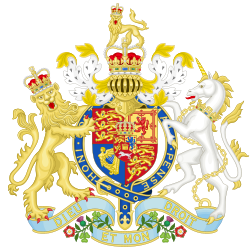| Act of Parliament | |
 | |
| Long title | An Act for confirming and continuing for a limited time, the restriction contained in the minute of council of the twenty-fifth of February one thousand seven hundred and ninety-seven, on payments of cash by the bank. |
|---|---|
| Citation | 37 Geo. 3. c. 45 |
| Territorial extent | Great Britain |
| Dates | |
| Royal assent | 3 May 1797 |
| Commencement | 27 September 1796 [a] |
| Expired | 2 December 1797 |
| Repealed | 21 August 1871 |
| Other legislation | |
| Amended by |
|
| Repealed by | Statute Law Revision Act 1871 |
| Relates to |
|
Status: Repealed | |
| Text of statute as originally enacted | |
The Bank Restriction Act 1797 (37 Geo. 3. c. 45) was an act of the Parliament of Great Britain which removed the requirement for the Bank of England to convert banknotes into gold. The period lasted until 1821, when convertibility was restored. The period between these two dates is known as the Restriction period.


